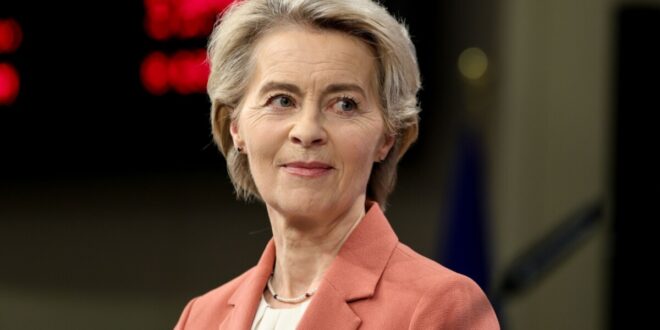The United States and the European Union need a structured, enforcement-focused approach to coordination on competition with China.

China’s expanding global ambitions, unfolding amid renewed great power competition, pose profound challenges to the strategic and economic interests of the United States and its European allies. As Beijing’s influence extends across regions and domains, China has moved to the center of the transatlantic economic and security agenda. Confronting these challenges exceeds Washington’s unilateral capacity.
Effective responses require close coordination with allies and partners—above all, European countries—to ensure that China’s unfair economic practices and assertive security posture are met with consistent transatlantic countermeasures across the globe. Given that the United States and the European Union together represent two of the world’s largest economies and most influential political actors, their joint actions can decisively shape the trajectory of China’s rise.
However, transatlantic coordination has been complicated by the different paces and patterns of adaptation pursued by the United States and the EU in response to China’s emergence as a systemic rival. Washington identified Beijing as the sole strategic competitor capable of challenging US leadership across all domains and shifted from engagement to balancing as early as 2017. By contrast, the EU has been slower to recalibrate. The EU’s policy on China has evolved unevenly, often constrained by hesitancy and internal inconsistency that have diluted the effectiveness of its collective response.
But what is the EU’s China policy? Who makes the EU’s China policy? How should we interpret the differences between the EU-level China policy and the individual China policies of EU member states? To paraphrase a quote attributed to former Secretary of State Henry Kissinger, who does the US national security advisor call if they want to talk to Europe about China?
Why US and EU China Policies Are Converging
Four geopolitical trends have collectively nudged the EU toward a tougher stance and a greater emphasis on balancing and de-risking. Russia’s invasion of Ukraine in February 2022 has profoundly altered European threat perceptions, with Beijing’s support for Moscow reinforcing skepticism toward China. Intensifying US-China strategic competition has led Washington to press its European partners to align on policy, strengthening transatlantic coordination despite persistent divergences.
However, uncertainty about US engagement with the world and in Europe, underpinned by deep domestic polarization and the resulting oscillations in American foreign policy, has weakened the foundation of consistent and sustained transatlantic coordination on China. Europe’s own exposure to China’s economic and competitiveness challenges has driven the creation of an EU economic security strategy, further aligning Brussels with Washington, though implementation remains uneven. Mounting concerns over technological dependencies and dual-use innovation have further sharpened the focus on resilience and competitiveness within EU policymaking.
The EU’s China Position
Although trade and investment form the backbone of Europe’s relationship with China, they are also the principal source of friction. At the EU level, the tendency to favor “de-risking, not decoupling” may be too soft an approach to achieve desirable trade flows while reducing strategic dependencies. Although this approach has spurred the rollout of the EU’s investment-screening mechanism, initiated anti-subsidy investigations into Chinese electric vehicles (EVs) and solar panels, and resulted in the freezing of the Comprehensive Agreement on Investment (CAI), it remains unclear whether these measures will suffice to counter Chinese influence.
Technology has emerged as the EU’s sharpest arena of competition with China, encompassing 5G infrastructure, semiconductors, artificial intelligence, and dual-use goods. The EU response includes the 5G toolbox, tighter export controls, and coordination with the United States on technology governance. However, the pace and scope of implementation vary widely across member states.
Security is the area in which China has most clearly been recast as a systemic rival, particularly since the announcement of its “no limits” partnership with Russia. Although China is officially defined as a systemic rival, few tangible measures have been adopted to operationalize this stance. The EU has tightened export controls, strengthened NATO coordination, and cautiously expanded its engagement in the Indo-Pacific. Member states’ responses again diverge, shaped by geography, threat perceptions, and alliance politics.
Related Articles
US and EU China Policy: Convergence and Divergence
Across key policy domains, the US and EU responses to China exhibit both convergence and divergence. In trade and investment, both sides have introduced investment-screening mechanisms for national security risks, imposed bans on imports linked to forced labor, sought to diversify critical mineral supply chains, and subsidized domestic semiconductor production.
Yet they differ in broader trade posture and industrial guardrails: the United States maintains a more protectionist stance, stronger outbound investment restrictions in advanced technologies, and stricter limits on Chinese participation in electric vehicle and battery manufacturing. In the technology realm, Washington and Brussels share priorities in scrutinizing China-related investments, safeguarding research and knowledge security, and closing channels through which sensitive technologies could reach Russia via China.
Differences persist, however, over regulating connected-vehicle cybersecurity, permitting Chinese telecommunications firms to participate in network infrastructure, imposing export controls on advanced technologies, and defining artificial intelligence governance standards. In the security domain, the United States and Europe largely agree on the nature of the China challenge, particularly regarding Beijing’s support for Russia and the need to protect critical infrastructure from espionage and sabotage. Divergences remain over the depth of intelligence sharing, the scope of engagement in the Indo-Pacific, law-enforcement approaches to counter-espionage, and management of port and logistics exposure to China-related risks.
Toward Closer US-EU China Coordination
Washington and Brussels should move from ad hoc coordination to a structured, enforcement-focused partnership on China that reestablishes the Transatlantic Trade and Technology Council and anchors cooperation in four core domains: economic security, technology, security, and alignment of regional strategies. This means building joint platforms to de-risk critical mineral and industrial supply chains, converging inbound and outbound investment screening and trade-defense tools, and treating semiconductors—both advanced and legacy—as a top-tier track for harmonized export controls and subsidy rules.
Crucially, the United States and the EU should launch a coordination platform on critical minerals and supply chains in response to China’s recent moves to restrict its rare earths exports. This would be backed by co-financing, harmonized standards, and strategic stockpiles, alleviating China’s strategic leverage and coercive capacity in this field, and achieving critical minerals security for the entire transatlantic area.
A structured, enforcement-focused partnership between the United States and the EU also requires aligning rules and enforcement on artificial intelligence, quantum, and defense-related technologies so that listings, sanctions, and technology controls close loopholes rather than creating transatlantic arbitrage. On security, the United States and the EU must prioritize joint enforcement against China’s support for Russia’s war in Ukraine, step up coordinated responses to China-linked espionage and cyber operations, and develop a shared Indo-Pacific approach, including Taiwan Strait diplomacy and maritime presence.
By taking these and other steps toward closer transatlantic coordination on China, the United States and the EU can calibrate their diplomacy and economic statecraft to sustain momentum toward a coherent, durable transatlantic approach to China’s rise and expansion—the greatest geopolitical challenge to the United States and the European Union in the twenty-first century.
About the Authors: Zoltán Fehér and Valbona Zeneli
Dr. Valbona Zeneli is a nonresident senior fellow at the Atlantic Council’s Europe Center and the Scowcroft Center for Strategy and Security. Follow her on X: @ValbonaZeneliTo.
Zoltán Fehér is a diplomat-scholar and geostrategist, currently serving as a Nonresident Fellow at the Atlantic Council’s Global China Hub and as a Professorial Lecturer and Visiting Scholar at the Elliott School of International Affairs, George Washington University.
 Geostrategic Media Political Commentary, Analysis, Security, Defense
Geostrategic Media Political Commentary, Analysis, Security, Defense





